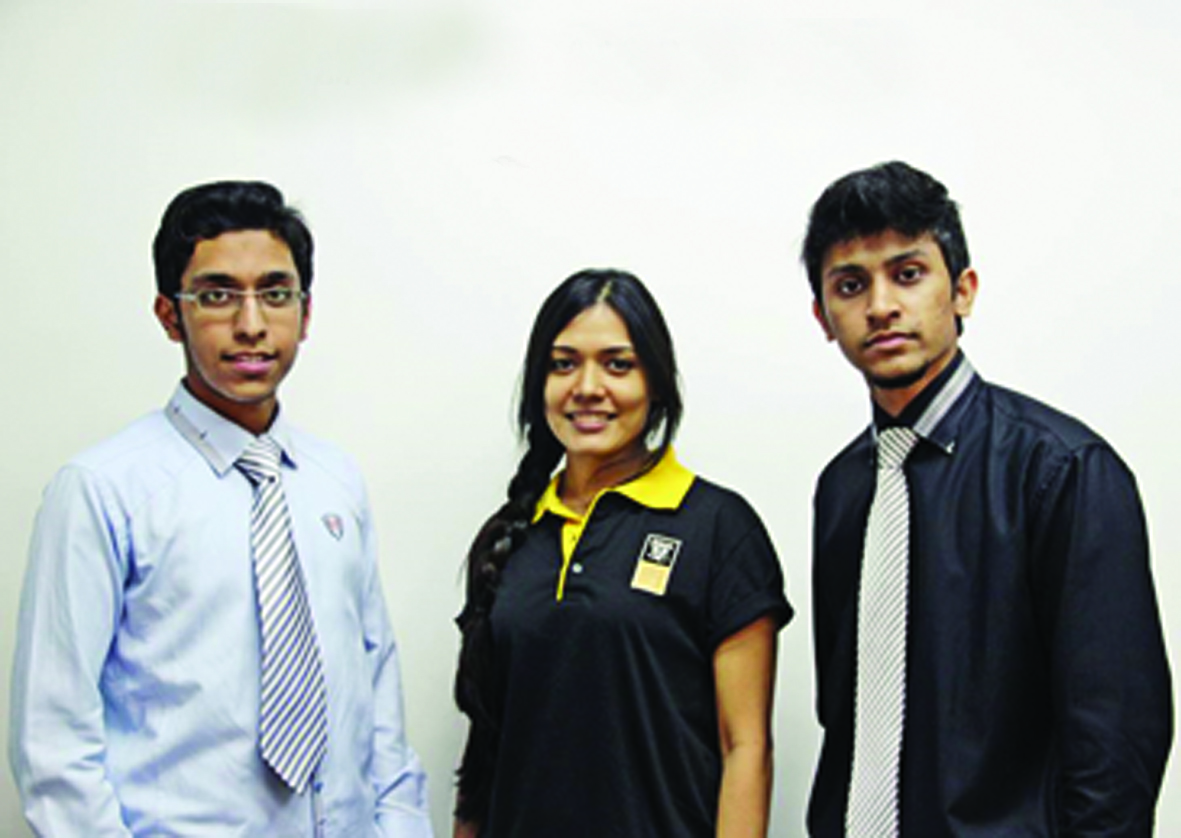KUCHING – A renewable energy idea entry by three Swinburne University of Technology Sarawak Campus students recently won one of the top five places in an international competition.
Electrical and electronics engineering students Danial Arif and Abdul Rehman Hafeez, and business student Nishantaini Devi Chandrasekaran were awarded fourth place for their Solar Tower renewable energy idea and bagged the prize money of US$2,000 at the Smarter Planet Challenge.
There were 129 entries from 29 countries.
This marks the first time a team from Malaysia secured one of the top places in the competition organized by the Institute of Electrical and Electronics Engineers (IEEE) in collaboration with IBM.
The IEEE is a professional association headquartered in New York dedicated to advancing technological innovation and excellence. It has about 425,000 members in 160 countries, while US-based IBM builds and markets computer hardware and software, and offers infrastructure, hosting and consulting services from mainframe computers to nanotechnology.
The IBM and IEEE program co-chairs commended the team in an email to Danial, stating “Your project received high marks in all of the evaluation criteria and reflects well on the professional skills of you and your teammates.”
The trio were ecstatic with the win. Abdul Rehman and Danial, final year electrical and electronic engineering students, are huge patrons of renewable energy and firmly believe in its potential.
“To understand the project idea, imagine a large inverted funnel-like structure slightly elevated from the ground, say, about the size of a football field. The transparent collector roof allows sunlight to pass through and heats up the ground beneath, which in turn heats the surrounding air.
“As hot air rises, the only exit available to it is the hollow tower in the centre where strong winds can be generated. A wind turbine generator at the base of the tower will harness the wind energy and produce electricity,” explained Abdul Rehman.
“The Solar Tower could generate electricity even during the night as the ground radiates back the heat absorbed during the day. There’s more to the idea than just electricity production. An interesting feature is the Greenhouse effect created in the collector area which causes the formation of dew. This facilitates vegetation growth and the large areas covered can be used for agricultural purposes, even if they are deserts. It’s a win-win situation,” added Danial.
Nishantaini brought in versatility to the interdisciplinary team and encouraged more participation by students in such competitions.
The Smarter Planet Challenge invites creative team-based student projects that could help them learn about applying engineering, science and other disciplines to solve real world problems.
Team advisor Associate Professor Manas Kumar Haldar, from the Faculty of Engineering, Computing and Science, said that the project was proposed by the students themselves and will be completed in the next semester.
A short video submitted by the team can be viewed at http://www.youtube.com/watch?v=WkjcRXUjNPs&feature-youtube


